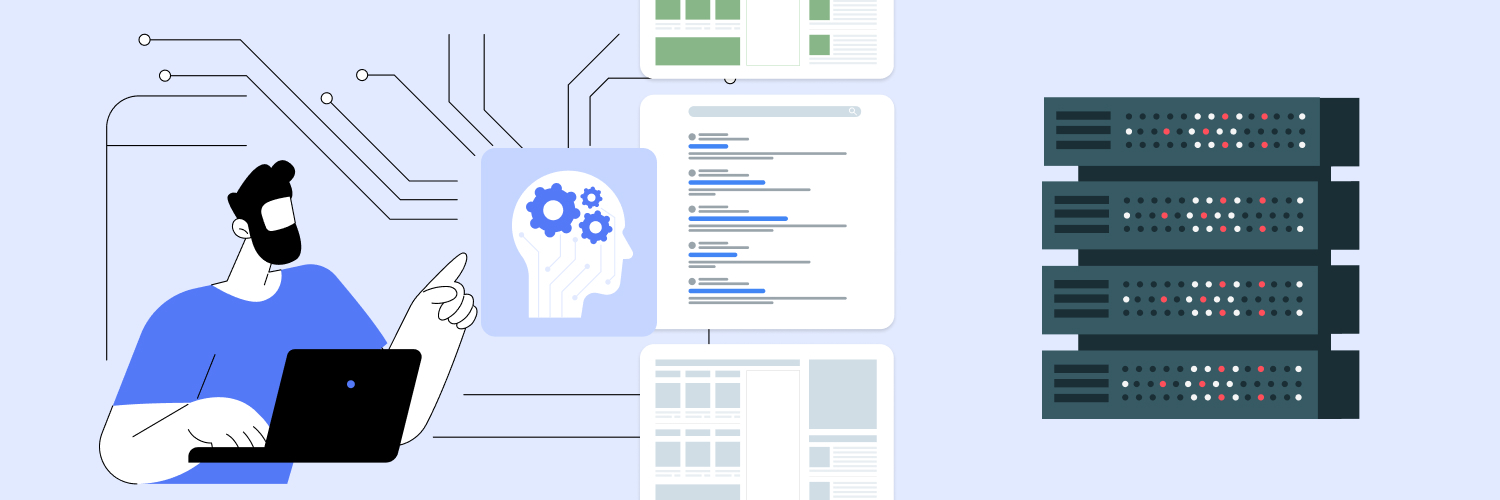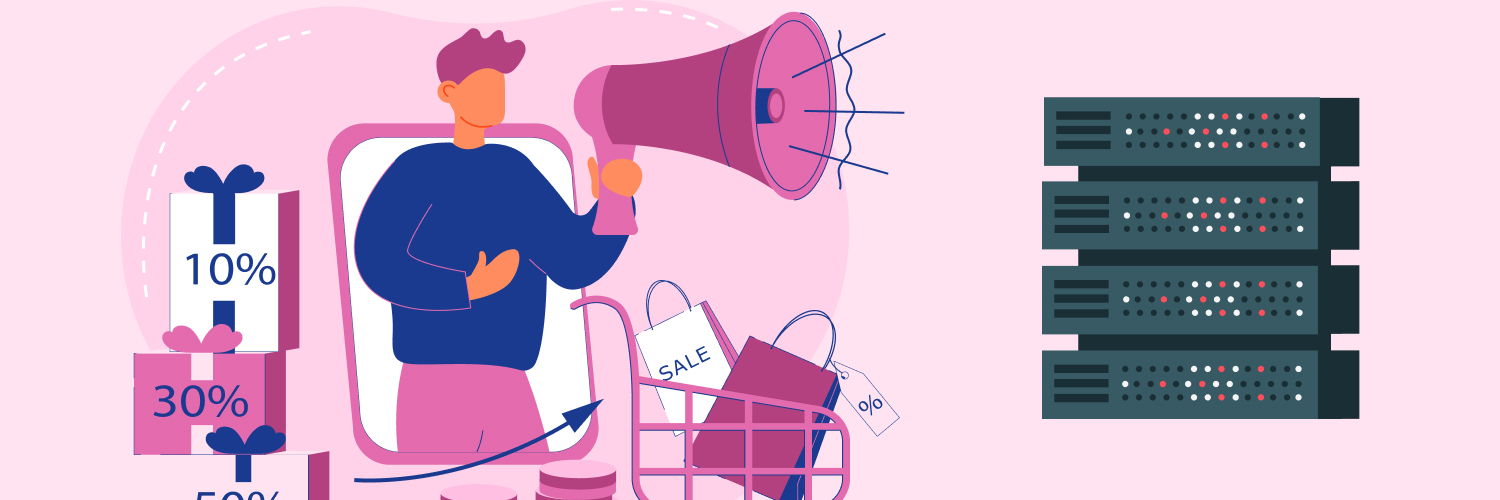What is Scala Programming Language – A Complete Guide
Scala programming language originated from Martin Odersky, who designed it address and enhance Java’s limitations. It operates on the JVM (Java Virtual Machine), which enables seamless integration with Java’s libraries and tools. However, Scala is an individual language since 2004, and not Java’s extension.
What makes Scala unique is its ability to combine functional programming and object-oriented approaches in a statically-typed environment. This allows the compiler to type-check while compiling. This unique combination results in more efficient and expressive code. You can run your Scala sample programs on different platforms without the need to recompile them since they run on the JVM.
This guide explores the Scala programming language, its features, frameworks, pros and cons, and more to help you understand why it ranks among the most robust Java alternatives.
What is Scala Programming Language?

Scala is a versatile, compiler-based language that revolutionized big data. This fast, compact, and efficient language supports functional and object-oriented programming styles on a wider scale.
The most outstanding benefit of using Scala is the Java Virtual Machine. Once the Scala compiler compiles code, it generates corresponding byte code, which goes to the JVM that generated the output. This ability makes Scala an ideal solution for large big data amounts.
Scala is a static type and robust language that helps simplify code. It minimizes the workload for developers since it reduces code snippets by two or three times compared to similar platforms. It’s possible to process every snippet in parallel, which enhances efficiency and speeds up the process.
Scala code is also easier to reuse and test. There are fewer bugs in the Scala sample programs, and there’s simpler parallelization.
Features of Scale Programming
Most companies who rely on Java for mission-critical applications are opting for Scala to enhance the application reliability, scalability and development productivity.
Scala’s operational characteristics are similar to Java’s, and it has individual features, such as:
-
Functionality
Scala is a hybrid functional language, where each value is an object, and each function is a value. It offers a lightweight syntax to define anonymous functions and allows nesting functions. It also allows currying and higher-order functions.
-
Object-oriented
Scala is purely object-oriented, which means each value is an object. Different traits and classes describe the types and behaviors of these objects.
Instead of multiple inheritance, Scala has a dynamic mixin-based composition mechanism and it extends classes by subclassing.
-
Runs on the JVM
The JVM executes the Java Byte Code that Scala compiles. This means Java and Scala have the same runtime platform, as the Java command and Scala commands are similar, allowing you to easily move between Scala and Java.
-
Statically-typed
Scala differs from other statically typed languages in that you don’t have to supply redundant information. In most cases, there’s no need to specify or repeat the type.
You can use abstractions in a coherent and safe way. The type system allows:
-
- Polymorphic methods- Scala’s methods have the capacity to parameterize by values or type
- Generic classes- Scala has inherent support for parameterized classes with types, which are useful when developing collection classes
-
Expressiveness
Scala is highly expressive as it offers numerous useful code. It’s a major advantage for Java developers looking to develop clean and efficient code.
-
Multi-Paradigm language
Scala accommodates Functional programming and Object-oriented programming, which are two different programming paradigms. This feature combination assists in writing simple and compact Scala programs as you explore both languages.
-
Ability to execute Java code
Scala allows you to use all Java SDK classes, as well as your preferred Java open-source projects and custom Java classes.
-
Synchronize and concurrent processing.
Scala enables you to convey general programming patterns effectively. It ensures type-safe coding while reducing the number of lines. You can write code in an immutable way, which simplifies applying parallelism or synchronize and concurrency.
-
Extensibility
Scala supports different language constructs and doesn’t require APIs, libraries, or DSL (Domain Specific Language) extensions.
Scala simplifies the process of adding libraries with new language. Closures develop automatically based on the expect type. Any methods can also use a postfix or infix operator. Using both features allows new statement definitions without the need to extend the syntax. Macro-like meta-programming facilities are also unnecessary.
Scale Programming Frameworks

Scala is a robust language that allows developers to create futuristic applications which are easy to scale and more affordable to maintain. However, the language is a starting point and may not have all functions in the language core. Frameworks exist to make it easier to start using scala programming online.
These frameworks give you options when determining the best technology to suit your project requirements. The most popular Scala frameworks include:
1. Lift
This is a scalable and secure framework that aims to resolve various security concerns such as cross-site scripting and code injection. Lift is open-source and powerful, designed for the Scala language.
Lift applications are in Scala language, which is highly compatible with Java. This allows you to access Java libraries and deploy the apps to your preferred app server and Servlet Container.
2. Akka HTTP
This advanced toolkit allows developers to build integration layers. It has the necessary tools to build these layers instead of application cores, which is helpful in high-load environments.
Akka HTTP is exceptionally robust and modular, created to offer development tools without forcing developers to choose particular ones.
The most outstanding benefit of Akka HTTP is its integration with Akka functionality. Similar to Akka, it supports various systems that can perform advanced computation processing and parallel commands.
3. Finch
This modular system has HTTP primitives that work together to form HTTP APIs. The Finch framework exists on the concept of composability and is, therefore, a highly customizable and modular system.
It aims to offer developers effective yet simple HTTP primitives that remain close to the bare metal Finagle API. It’s highly functional and fast for various systems.
4. Akka
This runtime and open-source toolkit is useful in distributed processing and deals with concurrency. Writing scalable, fault-tolerant, concurrent, and distributed systems in Java is often complex. Akka seeks to address this challenge by providing the right abstraction level and the best methods and tools.
It has a complete set of tools to enable the development of resilient and distributed message-driven applications. Akka’s wide ecosystem offers a wide range of tools for different purposes, such as Akka HTTP and Akka Actors.
For instance, Akka’s Actor Modern is a platform for building responsive, robust, and scalable applications.
5. Play
This high-velocity open-source application framework enables developers to create scalable web applications in Scala language. These applications come with the advantages of reactive systems like elasticity, resilience, and responsiveness.
The Play Framework simplifies developing online applications using Scala and Java, the same way Akka simplifies writing concurrent programs in Scala and Java.
Play exists on a web-friendly, stateless, and lightweight design that leverages Akka’s high scalability and concurrency to create highly scalable web applications. It offers low resource and predictable consumption (thread, memory, and CPU), resulting in exceptionally scalable applications.
6. Slick
This framework is an advanced database query and Scala’s access library. It links to data sources and databases, making it easier to use Scala to build high-performing distributed applications.
Slick allows you to use stored data the same way you use Scala collections while allowing you complete control over which data gets transferred and when database access takes place.
You can use Scala to write database queries instead of SQL, taking advantage of Scala’s compositionality, compile-time safety, and static checking. Slick also has an extensible query compiler that can create code for various backends.
7. Spark (Apache)
Apache Spark is another popular Scala framework. It’s particularly useful in the Big data industry as you can use it to analyze extensive amounts of data.
Apache Spark is an open-source cluster computing platform that offers a programming interface. This interface supports complete clusters that include fault tolerance and implicit data parallelism.
Why is Scala Programming Language Scalable?

A language’s scalability depends on different factors, such as the component abstraction construct and syntax details. What gives Scala the ability to scale is the combination of functional and object-oriented programming.
Here’s an overview of how these two principles come together in Scala.
Functional programming (FP)
In functional programming, functions are first-class values that result in more concise code and powerful abstractions. Additionally, functional programming emphasizes immutability. Data is always constant and doesn’t change with time.
It also supports the referential transparency principle. It signifies that changing a method call to its result in any input doesn’t affect the program’s semantics.
Object-oriented programming (OOP)
As a purely object-oriented programming language, each value in Scala is an object and each operation a method call, which ensures scalability and simplicity.
It avoids the complexities of multiple inheritance through the addition of new functionality in an unspecified superclass. It also uses features such as traits to ensure versatile object composition.
Scala effectively supports programming constructs such as:
- Inheritance
- Abstraction
- Polymorphism
- Pattern matching
- Immutable values
- Tail-call optimization
- High-order functions
Scala has an interpreter that can help with direct instruction execution without the need for previous compiling. It also comes with a parallel collections library that assists developers in addressing parallel programming patterns.
Scale is also precise and offers advanced support for backend operations.
Scale Program Applications

As a general-purpose programming language, Scala allows developers to create various application types within a shorter time. It has the capacity to accommodate multiple functionalities.
Scala has different applications, such as:
- Creating desktop applications
- Creating highly concurrent applications with Akka, like messaging apps
- Distributed and concurrency application
- Parallel batch processing
- Developing Android applications
- Scala applies in Hadoop
- Data and Big Data analysis using Apache Spark
- Supports a web application’s back and front ends with scala.js
Scala helps to build distributed systems and apps
Scala runs on the JVM so you can use one language to develop web services and applications, develop Bog data systems and create backend code for mobile applications.
As a multi-paradigm functional language, Scala allows type inference but has static types. There’s no need to specify types each time, and it supports dynamic behavior in implicit and type classes or types with linked behaviors.
Scala enables building scalable and modular software
Although Scala is statically typed, it has an elaborate type system that relies of type inference and polymorphism. Scala gets compiled into JavaScript source code and Java bytecode, allowing developers to achieve more using less effort.
With Scale programming, there’s no need for complex type annotations like most similar languages. This is especially beneficial if you need to write code that relies on the standard library designed to be modular and extensible, a vital aspect in most modern apps.
Scala assists in building fast software
Scala runs on the Java platform by design and is completely object-oriented. Similar to Java, all types have methods and fields. However, Scala supersedes Java in several ways.
- Scala has native interoperability with Java libraries through the JVM bytecode interop. It eliminates the need for wrappers in every Java library function.
- Scala enables functional programming. This means that your functions can be first-class citizens in different programs like other data. You can easily reuse code than when everything is an instance of a class or an object.
- Scala is statically typed, so the compiler detects errors before the code runs, which eliminates bugs in your software when running.
Scala best suits multiple business verticals
Scala is applicable in various business verticals and industries such as retail, finance, media, manufacturing and insurance. You can use it to develop applications for cloud or server computing and desktop use cases.
You may also use Scale programming to build UAVs (unmanned aerial vehicles), IoT devices like sensors, embedded systems like Raspberry Pi, and mobile apps like Android. The language is simple to use in existing and new Android projects. Applications built with Scala are lightweight, starting from 30kb.
Scala.js collects Scala code to Javascript and allows bilateral interoperability between Javascript code and Scala. This ability enables the development of front-end web applications using Javascript frameworks and libraries.
Some components of the Hadoop ecosystem, such as Apache Spark and Apache Kafka, allow the use of Scala. This is especially useful if you intend to use Scala to build applications that use ecosystem and Hadoop projects.
Scala works faster compared to Java, which helps to simplify programmers’ work and enhance productivity.
How Scala Differs From Java

|
Differences at a Glance |
|
| Scala | Java |
| Simple syntax | Complex syntax |
| Lower chances of defects | Bug-free codes are not assured |
| Statically-typed | Dynamic in nature |
| Rewriting is not necessary | Rewriting is necessary |
Java and Scala are both invaluable to developers. They have similarities like compatibility with the JVM but they have unique features that deliver different experiences. Most professionals see Scala as a more advanced alternative, if you’re considering switching from Java.
To answer the question, what is scala programming? We look at outstanding differences between Java and Scala, such as:
- Scala prefers expressions rather than Java statements, resulting in more predictable and clean code. Scala offers more dynamic ways to lower the code complexity than Java. This ability makes it easier to lower code duplication and shorten the code.
- Scala offers a variety of immutable collections which strongly emphasize immutability. Immutable collections reduce the chances of errors and bugs occurring compared to mutable collections. The coding structure is also simpler to understand.
- Scala has intuitive and fluid syntax. It offers the same benefits as other dynamically typed languages but still remains a static language. Instead of mainly relying on object-oriented principles like Java, Scala combines functional and object-oriented paradigms. This results in a more dynamic programming experience.
Scala is relatively new and machine-compiled compared to Java. In contrast, Java is object-oriented.
Scala boasts enhanced conciseness and code readability and can function in a multi-core architecture environment. One can write the same code written in Java with half the lines in Scala. This means one bug may be challenging to identify in Java but is easy to detect and eliminate in Scala.
Scala’s impressive scalability supports most backend operations. It can function in a multi-architecture ecosystem with synchronized and concurrent processing. This makes it more suitable for Big data than other programming languages.
Key Advantages of Advanced Programming in Scala

The parallelism and concurrency features in Scale programming grant you access to Big data tools like Apache Spark.
Performance issues will be a thing of the past, as Scala offers lightweight threads. These threads are more efficient than Java threads and other object-oriented languages that need process synchronization to access shared memory structures like maps or lists.
There are four outstanding aspects of Scala, including:
-
Compatibility
Scala ensures harmonious interoperability with Java. This makes it easier to improve existing Java codebases, so there’s no need to start from scratch. Complete Java interoperability also allows developers to implement Java interfaces, inherit code from Java classes, and use Java methods without extra code or special syntax.
Scala reuses and enhances Java types, resulting in more convenient methods for strings such as toFloat and toInt. This flexibility is possible without impacting interoperability due to implicit conversions.
-
Conciseness
Programs built with Scala are shorter than Java programs. This shortness comes from Scala’s precise syntax, libraries, and type inference capabilities. Since its syntax has less noise, there’s no need for semicolons.
Furthermore, type inference makes programs more readable and less cluttered by eliminating repetitive type information.
Scala enables developers to create robust libraries that don’t need redundant code. This is possible due to parameterized methods and traits that enhance maintainability and enable code reuse.
-
High-level
Software projects are often complex, which makes it challenging for programmers to understand and maintain code. Scala addresses this complexity by enhancing the abstraction level in code interfaces. This is possible through Scala’s lightweight function literals that allow streamlined code to have control abstractions. Scala supports code clarity and brevity, lowering the chances of duplication and errors.
Java, on the other hand, requires more complex interface definitions for the same abstractions.
-
Statistically typed
Scala has an innovative static-type system that ensures easy understanding and higher code quality. It minimizes verbosity by introducing a type interface and allows flexibility through pattern matching. It introduces innovative ways to compose and write types.
Scala has a type interface, so there’s no need to use explicit type annotations. The code becomes more readable and cleaner. This type of system allows advanced program documentation, safe refactoring with confidence, and early detection of some runtime errors or verifiable properties.
Other advantages of Scala include:
- Features such as pattern matching ensure better conditional logic
- It has contextual abstractions to eradicate repetitive code
- It offers the ability to integrate several traits into one object or class
- More flexibility since there’s no imposing structure when defining methods
- Scala reduces complex code and is concise by design
- It supports creating immutable code by default
Drawbacks of Scala Programming Online
Steep learning curve
Scala ranks among the most advanced programming languages. However, it has features that some developers find complex and unfamiliar.
It may be time-consuming to understand its concept and effectively use the language.
Limited developer community
Fewer developers use Scala compared to other programming languages like Java and WordPress. This could mean it will be more challenging to handle scala programming interview questions when you face difficulties. It may also be challenging for companies to find experts in the field since Java developers may need some time to get up to speed with Scala.
Less compatibility
Scala is a less-used and relatively new programming language. Sometimes it’s not compatible with other libraries and systems, which can affect the project quality. It can also be more time-consuming to use this programing language.
Conclusion

The dynamic programming landscape is rapidly evolving, with Scala standing out as an advanced language that combines functional and object-oriented programming.
It delivers a powerful static type system, high-level abstractions, conciseness, and compatibility. Scala is an all-rounded solution if you’re looking for a way to effectively simplify code. One of the most prominent benefits for developers is its ability to minimize the workload by minimizing the number of code snippets by two or three times.
Advanced programming in Scala is well-documented and accessible, making it ideal for most developers, regardless of their experience level. Software written in Scala is easy to deploy, debug, test, and code, and you can use it to build software as a service (SaaS), mobile solutions, web applications, games, and desktop software. Scala programming language offers advanced features and clean code in an open-source package that takes advantage of Java’s environment. Whether you’re handling large-scale projects or developing small scripts, Scala’s adaptability and scalability make it a choice worth considering in your next project.
The information contained within this article, including information posted by official staff, guest-submitted material, message board postings, or other third-party material is presented solely for the purposes of education and furtherance of the knowledge of the reader. All trademarks used in this publication are hereby acknowledged as the property of their respective owners.





